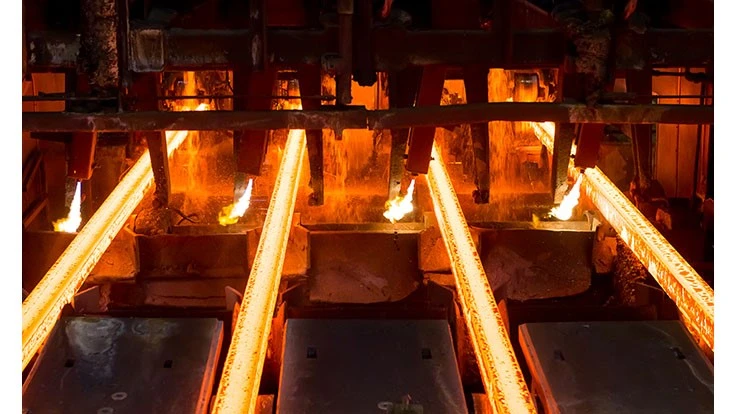
Photo courtesy of ArcelorMittal
Steel output figures globally or in the United States are showing continuing weakness, doing little to cheer up ferrous scrap recyclers. Europe’s steel federation, meanwhile, is predicting output to decline on that continent again next year.
In the U.S., the Washington-based American Iron and Steel Institute (AISI) says in the week ending Oct. 22, steel output in the U.S. checked in at 1.67 million tons. That figure is down by 9.1 percent compared with the comparable week in 2021. It also is down 1.1 percent from the prior week.
Year to date, steel producers in America have made slightly more than 73 million tons of steel, operating at a 79.2 percent average mill capability utilization (capacity) rate. That output figure is down 4.6 percent from the same time frame in 2021, when mills were operating at an 81.2 percent average capacity.
Globally, the Brussels-based World Steel Association (Worldsteel) has released steel output figures for the first three quarters of the year from the more than 60 nations that report to it.
All those nations combined have produced 4.3 percent less steel in the first nine months of 2022 compared with 2021, fairly closely mirroring the decline in U.S. output.
Turkey, the largest overseas buyer of U.S. outbound ferrous scrap, has suffered one of the steepest drops, with its output down by 9.3 percent year to date. Although China has just a 3.2 percent reduction in output, its status as the world’s largest steelmaker means that by volume its 25.1 million metric tons of reduced output this year also is the world’s largest.
Germany, the European Union’s largest steel producer, is making 6 percent less steel so far in 2022 compared with last year. A forecast from Brussels-based steel association Eurofer does not bode well for a rebound in 2023.
Eurofer, in a forecast released Oct. 22, writes in part, “The continuing deterioration of the EU economy following Russia’s invasion of Ukraine and the energy crisis is leading to a recession severely impacting industrial sectors. The steel market outlook has worsened for both the second half of 2022 and 2023, with steel demand receding more strongly than expected (-3.5 percent for this year and -1.9 percent for next year).”
“All downside factors have remained in place and even exacerbated, especially skyrocketing energy prices, which lead to unbearable production costs," Eurofer Director General Axel Eurofer says. "This has entailed a further cut in apparent steel consumption and a significant downward revision of steel-using sectors’ output in the EU for the remainder of this year and supposedly for the first half of next year.”
Some metals producers, including Alcoa, Aurubis and Hydro, have urged governments around the world to put up barriers to Russian-made metal, which is enjoying a cost advantage despite sanctions intended to punish it. Eggert may be referring in part to Russia when he says, “Even more worrying is the persistent high level of distortive steel imports into the EU in such a context.”
Latest from Recycling Today
- Aqua Metals secures $1.5M loan, reports operational strides
- AF&PA urges veto of NY bill
- Aluminum Association includes recycling among 2025 policy priorities
- AISI applauds waterways spending bill
- Lux Research questions hydrogen’s transportation role
- Sonoco selling thermoformed, flexible packaging business to Toppan for $1.8B
- ReMA offers Superfund informational reports
- Hyster-Yale commits to US production





